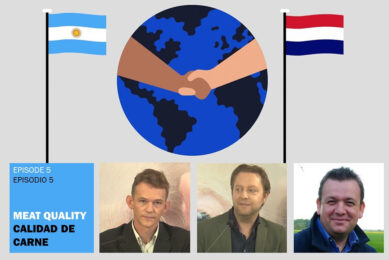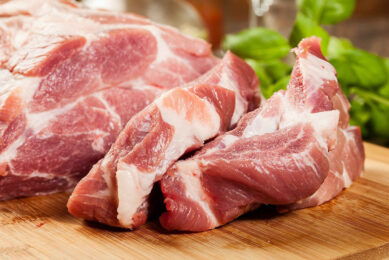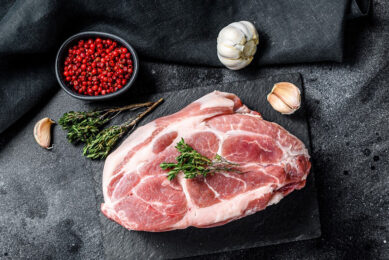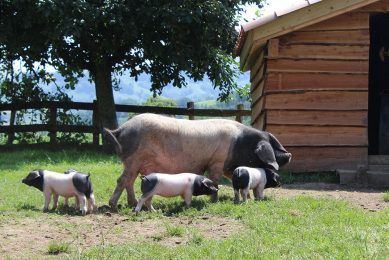Smartphone images can accurately assess pork marbling

Chinese researchers looked into the use of a shallow context encoder network (Marbling-Net) to accurately segment pork marbling regions from smartphone images.
Pork marbling is the representation of intramuscular fat, which contributes to pork quality and taste. Visual scoring is a subjective approach to evaluate marbling characteristics. However, it may produce unreliable and inconsistent results. Therefore, smart, non-destructive and low-cost techniques are necessary to quantitatively assess the marbling characteristics of pork.
Data collection
The researchers dissected the longissimus dorsi muscle from the freshly slaughtered carcass of 215 Large White and Tongcheng pigs. Then, they placed slices of this muscle in a black disk for image acquisition using the rear camera of an iPhone 6. Finally, they selected 173 high-quality images dissected from different pigs to construct the dataset.
They measured the intramuscular fat content for each slice of the longissimus dorsi muscle, and recorded the marbling score. After cropping the images, they applied the mean shift filter operation to them to reduce the reflective noise and to enhance the edge of the marbling regions. The team used a patch-based training framework and the Marbling-Net for precise pork marbling segmentation by taking the cropped patches of the pork image as the input and scaling up the input patches to enlarge image resolution. They also investigated the influence of patch size on the model performance.
Characterisation of the dataset
Marbling in the images appeared as small white flecks or thin stripes sparsely distributed within the pink lean. The marbling proportion ranged from 0.5% to 3% in approximately 90% of the images.
Evaluation metrics for image segmentation
Intersection over Union is the ratio of overlap area to union area between the segmented map and the ground truth. Precision indicates the proportion of samples that are predicted to be correct among all samples. Recall is defined as the percentage of all samples with positive labels that are predicted. F1-score is the harmonic mean of precision and recall.
Marbling-Net segmentation results
Marbling-Net had a higher Intersection over Union, recall, and F1-score than other segmentation methods. In addition, Marbling-Net was able to capture the marbling of different scales and shapes in the image and segment the marbling areas more completely with relatively fewer parameters. Furthermore, Marbling-Net has an acceptable time cost of 249.81 ms per image. The ratio of marbling, the intramuscular fat content and the marbling scores had a high correlation which illustrates the reliability of the Marbling-Net model in the analysis of pork marbling features.
Patch-based training
Patch-based training breaks the image into multiple sub-regions or patches, and it is an effective method for small object detection and segmentation. Patch-based training decreased memory consumption and calculation and increased the size of the training dataset.
Comparison of different patch sizes
The Marbling-Net segmentation performance improved as the patch size increased from 50 × 50 to 200 × 200, but it decreased when the patch size exceeded 200 suggesting that patch size affected the marbling segmentation accuracy.
Conclusions
The authors concluded that the Marbling-Net provides accurate segmentation results of pork marbling images. It can be further developed as a valuable tool for effectively and efficiently extracting multiple marbling traits from each image. Marbling-Net did have a long inference time; therefore, further research is required to develop a novel pork marbling segmentation pipeline to improve segmentation performance and to decrease the computational time in the future.











